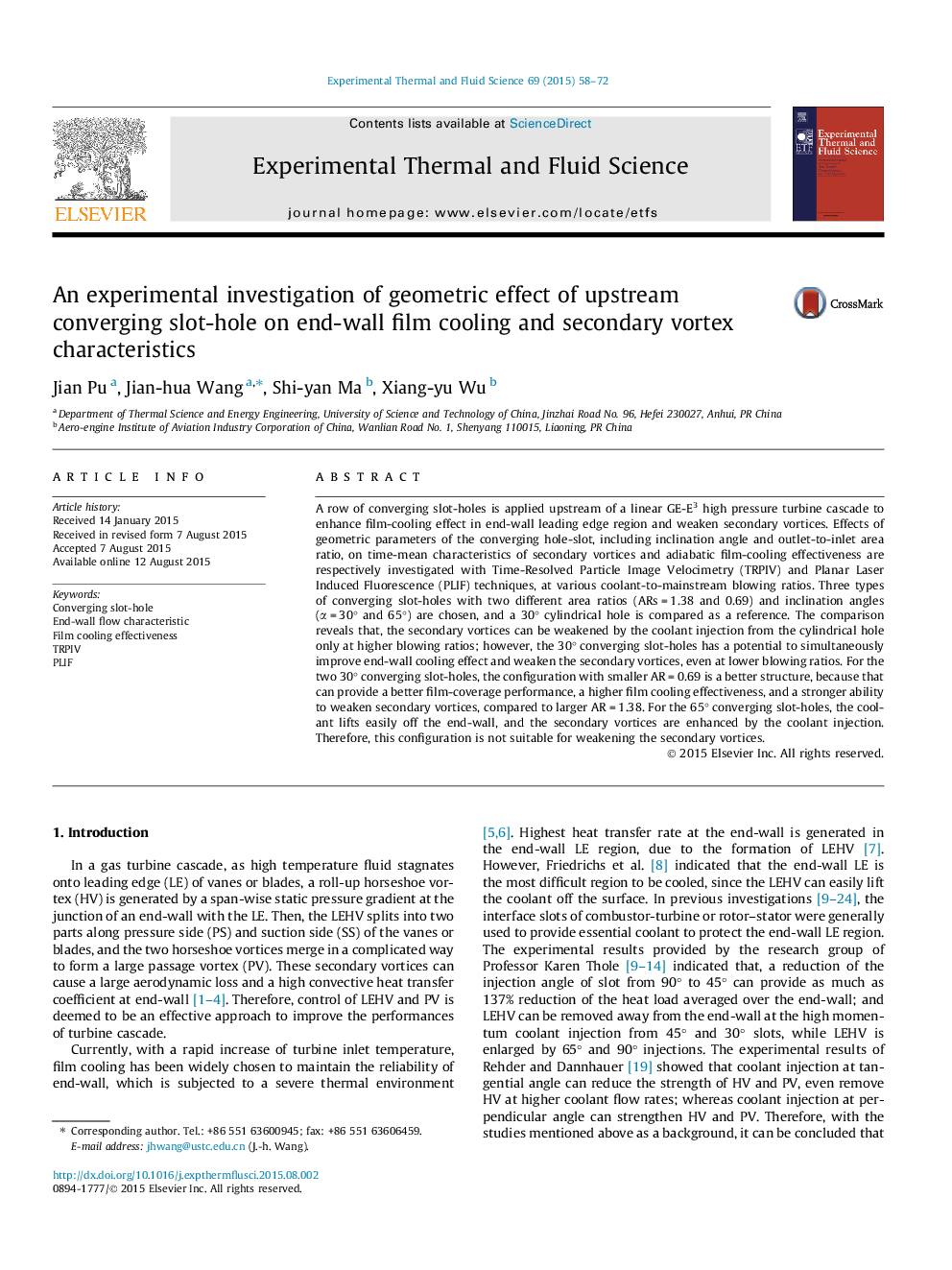| Article ID | Journal | Published Year | Pages | File Type |
|---|---|---|---|---|
| 7052118 | Experimental Thermal and Fluid Science | 2015 | 15 Pages |
Abstract
A row of converging slot-holes is applied upstream of a linear GE-E3 high pressure turbine cascade to enhance film-cooling effect in end-wall leading edge region and weaken secondary vortices. Effects of geometric parameters of the converging hole-slot, including inclination angle and outlet-to-inlet area ratio, on time-mean characteristics of secondary vortices and adiabatic film-cooling effectiveness are respectively investigated with Time-Resolved Particle Image Velocimetry (TRPIV) and Planar Laser Induced Fluorescence (PLIF) techniques, at various coolant-to-mainstream blowing ratios. Three types of converging slot-holes with two different area ratios (ARs = 1.38 and 0.69) and inclination angles (α = 30° and 65°) are chosen, and a 30° cylindrical hole is compared as a reference. The comparison reveals that, the secondary vortices can be weakened by the coolant injection from the cylindrical hole only at higher blowing ratios; however, the 30° converging slot-holes has a potential to simultaneously improve end-wall cooling effect and weaken the secondary vortices, even at lower blowing ratios. For the two 30° converging slot-holes, the configuration with smaller AR = 0.69 is a better structure, because that can provide a better film-coverage performance, a higher film cooling effectiveness, and a stronger ability to weaken secondary vortices, compared to larger AR = 1.38. For the 65° converging slot-holes, the coolant lifts easily off the end-wall, and the secondary vortices are enhanced by the coolant injection. Therefore, this configuration is not suitable for weakening the secondary vortices.
Related Topics
Physical Sciences and Engineering
Chemical Engineering
Fluid Flow and Transfer Processes
Authors
Jian Pu, Jian-hua Wang, Shi-yan Ma, Xiang-yu Wu,
